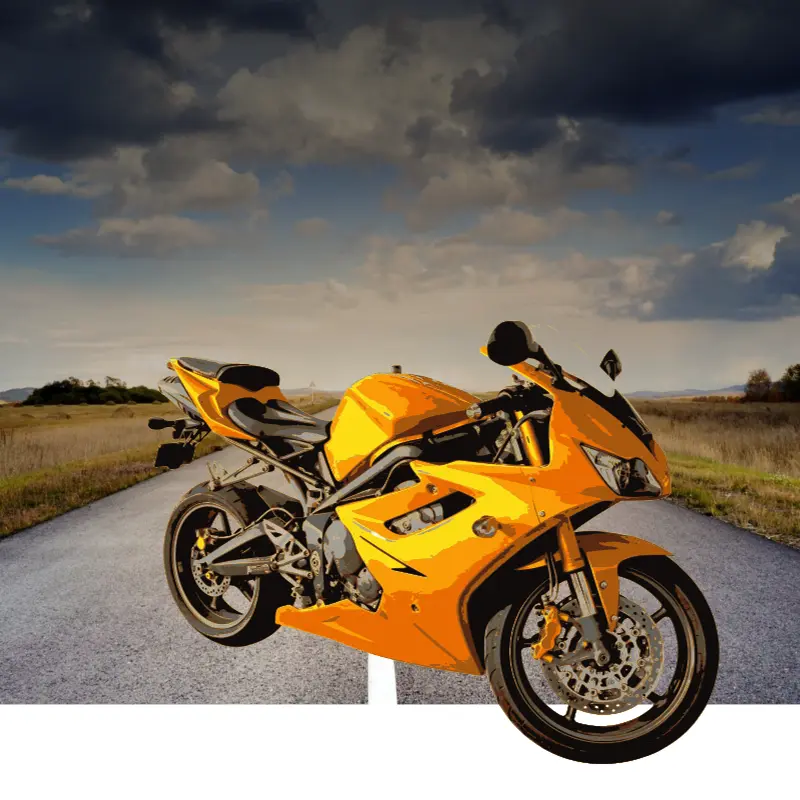Sharing the road with motorcycles and limited-speed motorcycles demands a unique understanding of their dynamics and road behaviors. As nimble two-wheeled vehicles, motorcycles and limited-speed motorcycles bring diversity to our roadways, offering efficient transportation options for riders.
The importance of sharing the road with motorcycles
In this comprehensive guide, we will explore the importance of sharing the road with motorcycles and other types of vehicles, key safety considerations for drivers and riders, infrastructure enhancements, and the cultivation of a culture of mutual respect.
I. Understanding The Importance of Sharing the Road with motorcycles
A. Efficient and Sustainable Transportation
Motorcycles and limited-speed motorcycles contribute to more efficient and sustainable transportation. They offer fuel efficiency, reduced traffic congestion, and a smaller environmental footprint compared to larger vehicles. Recognizing the importance of these vehicles in the transportation ecosystem fosters a more inclusive and diverse road environment and is helpful when sharing the road with motorcycles.
B. Unique Riding Experience
For many riders, motorcycles and limited-speed motorcycles provide a unique and enjoyable mode of travel. The open-air experience, maneuverability, and sense of freedom make these vehicles popular choices. Acknowledging and respecting the different needs and experiences of motorcyclists enhances the overall safety and harmony on the roads when sharing the road with motorcycles.

II. Safety Considerations for Drivers when Sharing the road with motorcycles
A. Awareness and Visibility
One of the primary safety considerations for drivers is maintaining awareness of motorcycles and limited-speed motorcycles. These vehicles can be less visible than larger automobiles, especially in blind spots. Drivers should frequently check mirrors, make head checks, and be attentive to the presence of two-wheeled vehicles around them.
B. Give Adequate Space
Providing motorcycles with adequate space is crucial for safety. Avoid tailgating and allow a safe following distance, recognizing that motorcycles may need to make sudden stops. A buffer zone enhances reaction time, reducing the risk of rear-end collisions.
C. Use Turn Signals Clearly
Clear communication on the road is essential for the safety of all users. Drivers should use turn signals well in advance of making a maneuver, providing motorcyclists with ample time to anticipate the movement. This is especially important during lane changes, turns, and merges.
D. Be Mindful of Road Conditions
Motorcycles can be more sensitive to road conditions than larger vehicles. Drivers should be mindful of potholes, uneven surfaces, and slippery conditions. Potholes that may be a minor inconvenience for a car can pose a significant risk to a motorcyclist.
III. Safety Considerations for Motorcyclists
A. Wear Protective Gear
Motorcyclists should prioritize their safety by wearing protective gear. Helmets, gloves, jackets, pants, and appropriate footwear offer essential protection in the event of an accident. High-visibility gear enhances visibility, especially in challenging weather conditions.
B. Defensive Riding
Adopting a defensive riding mindset is crucial for motorcyclists. Anticipate potential hazards, be aware of surrounding traffic, and always have an escape route in mind. Defensive riding helps motorcyclists respond effectively to unexpected situations on the road.
C. Maintain Lane Positioning
Maintaining optimal lane positioning is an essential safety practice for motorcyclists. Choose positions that maximize visibility for other road users, especially drivers in larger vehicles. Positioning can vary based on traffic conditions and the rider’s intended direction.
D. Be Wary of Blind Spots
Motorcycles can easily end up in the blind spots of larger vehicles. Riders should be aware of these blind spots and avoid lingering in areas where drivers may not easily see them. Quick movements and lane changes should be executed with caution.
IV. Infrastructure Enhancements
A. Motorcycle-Specific Infrastructure
Cities and urban planners can enhance motorcycle safety by incorporating infrastructure specifically designed for these vehicles. This may include dedicated motorcycle lanes, parking spaces, and traffic signals that accommodate the unique dynamics of motorcycles.
B. Road Maintenance
Well-maintained roads are essential for the safety of all road users, including motorcyclists. Potholes, uneven surfaces, and debris can pose significant risks to motorcycles. Regular road maintenance contributes to a safer riding environment.
C. Warning Signs and Markings
Clear and visible road signs and markings are crucial for providing information to all road users, including motorcyclists. Warning signs for curves, intersections, and potential hazards should be strategically placed to allow riders to anticipate road conditions.
V. Cultivating a Culture of Mutual Respect
A. Education and Awareness
Public education campaigns play a pivotal role in fostering a culture of mutual respect between drivers and motorcyclists. These campaigns can provide information on the unique challenges faced by motorcyclists and emphasize the importance of sharing the road safely.
B. Motorcycle Safety Courses
Both novice and experienced riders can benefit from motorcycle safety courses. These courses provide valuable insights into defensive riding techniques, road awareness, and emergency maneuvers. Encouraging participation in safety courses contributes to overall road safety when sharing the road with motorcycles.
C. Law Enforcement and Accountability
Law enforcement plays a crucial role in ensuring compliance with traffic laws related to motorcyclists. Strict enforcement of regulations, including penalties for violations, creates a deterrent and reinforces the importance of responsible road behavior.
D. Community Engagement
Engaging communities in discussions about shared road use helps build a sense of shared responsibility. Local organizations, schools, and government agencies can collaborate to organize events, workshops, and initiatives focused on creating safer road environments.

Conclusion
Sharing the road with motorcycles and limited-speed motorcycles requires a collaborative effort from all road users. By recognizing the importance of these vehicles, understanding the unique safety considerations for drivers and riders, implementing infrastructure enhancements, and promoting a culture of mutual respect, we can create a road environment that is safe, inclusive, and accommodating for all. Through education, infrastructure improvements, and community engagement, we can work towards a future where roads are spaces of shared responsibility and mutual respect, where motorcycles and limited-speed motorcycles can coexist safely and harmoniously and any person can drive carefully and sharing the road with motorcycles.
